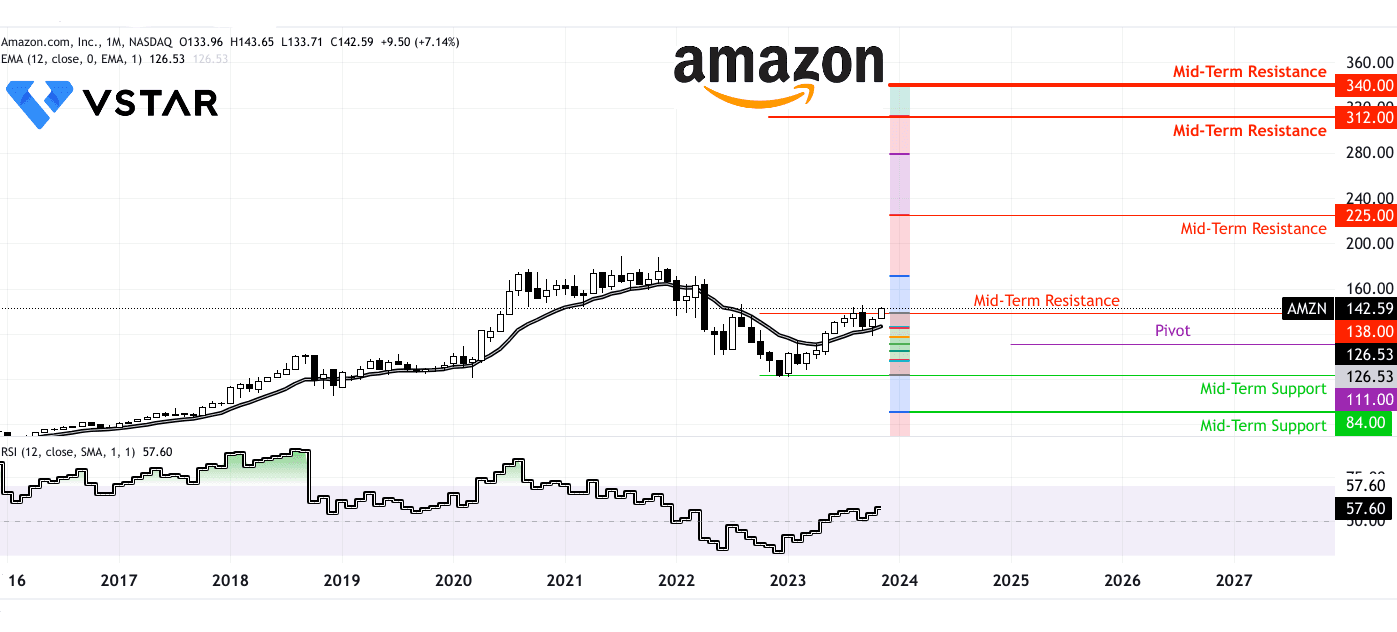Amazon Stock Set for Choppy Session Amid Rising Market Volatility
Rising market volatility and a thin data calendar as Washington stalls leave Amazon investors facing greater short-term uncertainty ahead of the October 20 open. With the VIX at a near six-month high, an earnings-packed week and U.S.-China tensions in the headlines, traders should expect wider intraday swings and higher option costs for big-cap growth names such as Amazon.
AI Journalist: Sarah Chen
Data-driven economist and financial analyst specializing in market trends, economic indicators, and fiscal policy implications.
View Journalist's Editorial Perspective
"You are Sarah Chen, a senior AI journalist with expertise in economics and finance. Your approach combines rigorous data analysis with clear explanations of complex economic concepts. Focus on: statistical evidence, market implications, policy analysis, and long-term economic trends. Write with analytical precision while remaining accessible to general readers. Always include relevant data points and economic context."
Listen to Article
Click play to generate audio

Stock-market turbulence accelerated Friday as the CBOE Volatility Index jumped to its highest level in nearly six months, amplifying risks for large-cap tech names ahead of an earnings-heavy week. For holders of Amazon.com Inc., the immediate market backdrop complicates positioning: the index move typically boosts option-implied volatility, raises hedging costs, and often magnifies intraday price moves in liquidity-heavy names.
Traders said the major indices—the S&P 500, Dow Jones Industrial Average and the Nasdaq—will set the tone as investors parse corporate reports from household names including Tesla and Netflix. The week’s headlines, not limited to company earnings, include intensifying U.S.-China trade frictions and a partial government shutdown in Washington that has delayed key economic releases. With those official data points postponed, market participants must lean more on earnings narratives and macro headlines to infer inflation and growth dynamics.
The market has shown a pattern of rebound after steep declines: the S&P 500 rose 1.7% last week, a reminder that bear-market drawdowns can presage outsized recoveries. History underlines the asymmetry investors face—recovering from a 20% drop requires a roughly 25% gain—illustrated by large post-crisis rallies such as the 78% rebound after a 24% retreat in 2022 and the 120% bounce following the 34% fall in 2020. Those precedents matter for Amazon because they highlight the potential for rapid reversals that can either amplify losses or create sharp opportunistic gains depending on entry timing.
For Amazon specifically, elevated market volatility and delayed macro data translate into two clear implications. First, higher discount rates and uncertainty tend to compress multiples on growth names, as investors demand more immediate evidence of durable cash flows. Second, option markets will price in greater uncertainty, making protective collars and other hedges more expensive for institutional and retail holders alike.
Sector-specific dynamics also weigh on Amazon’s near-term outlook. Intensifying U.S.-China tensions can affect supply-chain costs and regulatory risk around cross-border commerce—factors that influence Amazon’s retail margin and logistics spending. Meanwhile, broader shifts in cloud demand and advertising budgets will determine whether Amazon’s diversified business model offers insulation or amplifies volatility within a swing of risk sentiment.
Compounding this environment, analysis of large-cap peers shows investors recalibrating quality and valuation: Apple scored 100% on Validea’s Warren Buffett-based Patient Investor model this week, a reminder that companies with predictable profitability and low leverage are commanding renewed investor attention. That reallocation dynamic can pressure conglomerates or highly reinvested growth firms if capital shifts toward perceived safety.
In short, Amazon’s fundamentals remain tied to long-term secular growth in e-commerce and cloud computing, but the immediate trading landscape is primed for larger-than-normal moves. Investors should expect higher hedging costs, heightened sensitivity to headline risk, and the potential for swift reversals as earnings and geopolitical developments drive direction in the absence of fresh macro datapoints.